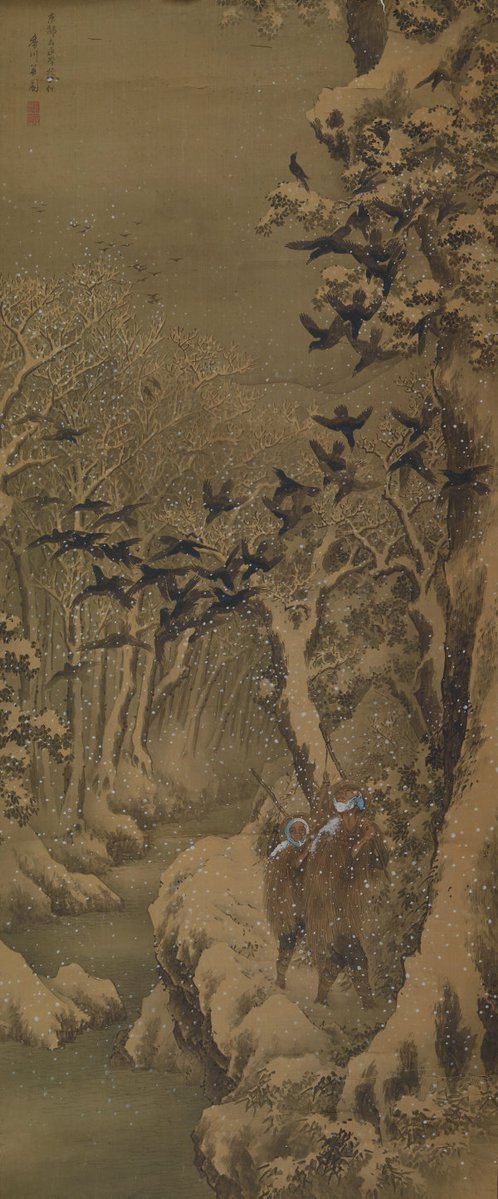


-
Details
- Place where the work was made
-
Japan
- Period
- Meiji period 1868 - 1912 → Japan
- Date
- late 19th century
- Media categories
- Scroll , Painting
- Materials used
- hanging scroll; ink and colour on silk
- Dimensions
- 119.6 x 49.2 cm image
- Signature & date
Signed u.l.corner, "[Japanese characters]" ink, "[two artist's seals]" red ink. Not dated.
- Credit
- Gift of Noreen Carpenter 2001
- Location
- Not on display
- Accession number
- 401.2001
- Copyright
- Artist information
-
Kagawa Hōen
Works in the collection
- Share
-
-
About
There is little information on Kagawa Hōen except that he was recruited in 1884 as a member of the group of prominent artists in the service of the Kyoto Prefectural School of Painting (est.1880). The group was responsible for electing teachers from its members. The teachers included Suzuki Shōnen and other prominent Kyoto painters at the time.
Due to the tradition of the Shijō-Maruyama school of naturalism, the Kyoto school painters had less difficulty than their Tokyo counterpart in incorporating the newly introduced Western-style painting into their own work. This painting is a good example of this new attitude: the attempt to incorporate perspective in terms of measurable distance is one of the characteristics of this trend and is evident here. But a more striking feature of this painting is the depiction of the tense relationship between the two hunters and the hovering crows in the chilly snowy mountain pass - as if the artist had reinterpreted a sedate traditional landscape and presented it more as a sensory experience.
Asian Art Department, AGNSW, 15 August 2001.
-
Places
Where the work was made
Japan
